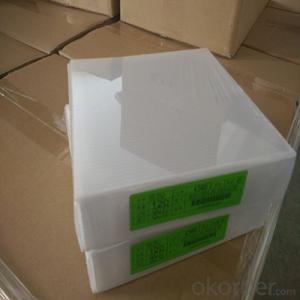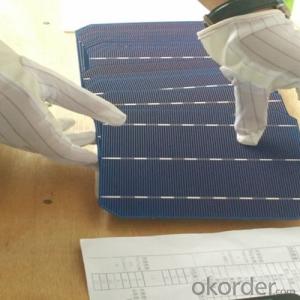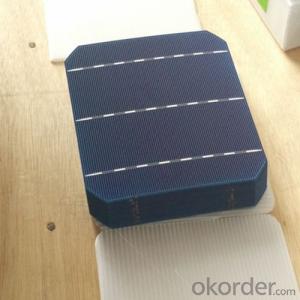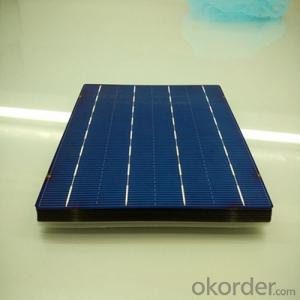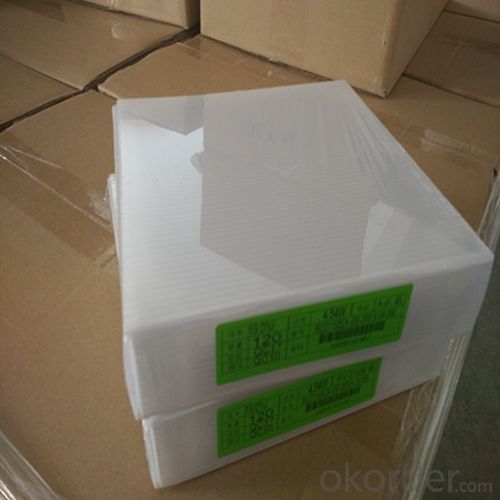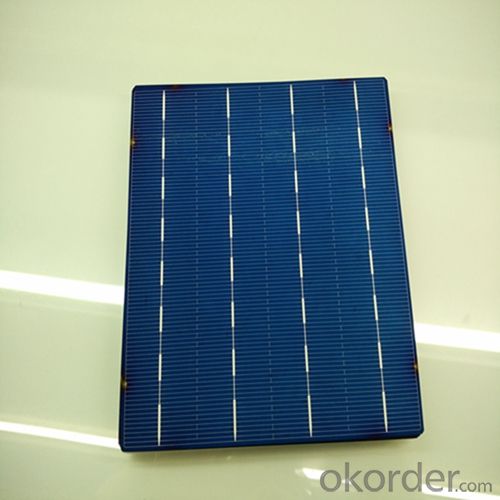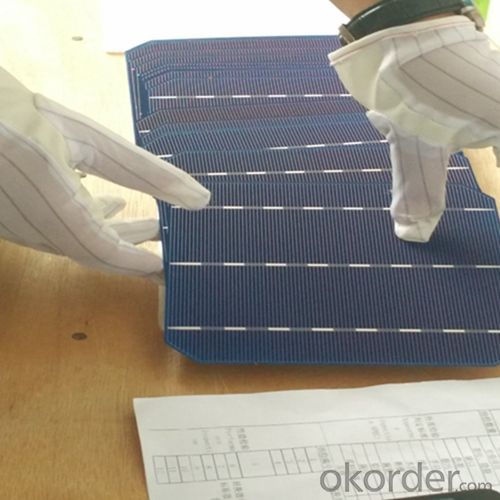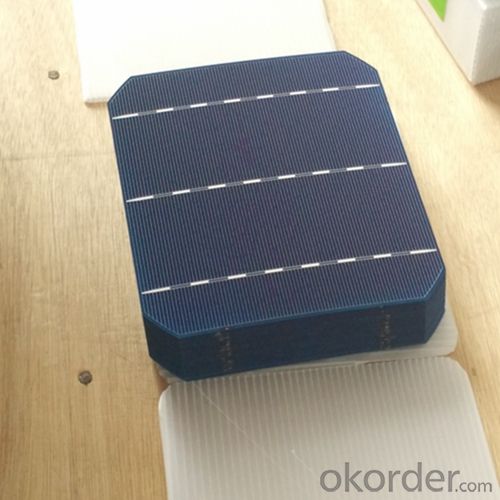Fiber Based Poly 156x156mm2 Solar Cells - Class 2BB
- Loading Port:
- Shanghai
- Payment Terms:
- TT or LC
- Min Order Qty:
- 3999 watt
- Supply Capability:
- 6000000 watt/month
OKorder Service Pledge
OKorder Financial Service
You Might Also Like
The operation of a photovoltaic (PV) cell requires 3 basic attributes:
The absorption of light, generating either electron-hole pairs or excitons.
The separation of charge carriers of opposite types.
The separate extraction of those carriers to an external circuit.
In contrast, a solar thermal collector supplies heat by absorbing sunlight, for the purpose of either direct heating or indirect electrical power generation from heat. A "photoelectrolytic cell" (photoelectrochemical cell), on the other hand, refers either to a type of photovoltaic cell (like that developed by Edmond Becquerel and modern dye-sensitized solar cells), or to a device that splits water directly into hydrogen and oxygen using only solar illumination.Characteristic of Mono 156X156MM2 Solar Cells
You are gaining energy independence - add battery backup power for even greater energy security
The cost of electricity is only going to rise – insure against that rising cost
Adaptive cells change their absorption/reflection characteristics depending to respond to environmental conditions. An adaptive material responds to the intensity and angle of incident light. At the part of the cell where the light is most intense, the cell surface changes from reflective to adaptive, allowing the light to penetrate the cell. The other parts of the cell remain reflective increasing the retention of the absorbed light within the cell.[67]
In 2014 a system that combined an adaptive surface with a glass substrate that redirect the absorbed to a light absorber on the edges of the sheet. The system also included an array of fixed lenses/mirrors to concentrate light onto the adaptive surface. As the day continues, the concentrated light moves along the surface of the cell. That surface switches from reflective to adaptive when the light is most concentrated and back to reflective after the light moves along
Mechanical data and design
Format | 156mm x 156mm±0.5mm |
Thickness | 210μm±40μm |
Front(-) | 1.5mm bus bar (silver),blue anti-reflection coating (silicon nitride) |
Back (+) | 2.5mm wide soldering pads (sliver) back surface field (aluminium) |
Temperature Coefficient of Cells
Voc. Temp.coef.%/K | -0.35% |
Isc. Temp.coef .%/K | +0.024%/K |
Pm.Temp.coef. %/K | -0.47%/K |
Electrical Characteristic
Effiency(%) | Pmpp(W) | Umpp(V) | Impp(A) | Uoc(V) | Isc(A) | FF(%) |
18.35 | 4.384 | 0.526 | 8.333 | 0.63 | 8.877 | 78.39% |
18.20 | 4.349 | 0.526 | 8.263 | 0.63 | 8.789 | 78.54% |
18.05 | 4.313 | 0.525 | 8.216 | 0.63 | 8.741 | 78.32% |
17.90 | 4.277 | 0.524 | 8.161 | 0.625 | 8.713 | 78.04% |
17.75 | 4.241 | 0.523 | 8.116 | 0.625 | 8.678 | 77.70% |
17.60 | 4.206 | 0.521 | 8.073 | 0.625 | 8.657 | 77.36% |
17.45 | 4.170 | 0.519 | 8.039 | 0.625 | 8.633 | 76.92% |
17.30 | 4.134 | 0.517 | 8.004 | 0.625 | 8.622 | 76.59% |
17.15 | 4.096 | 0.516 | 7.938 | 0.625 | 8.537 | 76.80% |
17.00 | 4.062 | 0.512 | 7.933 | 0.625 | 8.531 | 76.18% |
16.75 | 4.002 | 0.511 | 7.828 | 0.625 | 8.499 | 75.34% |
16.50 | 3.940 | 0.510 | 7.731 | 0.625 | 8.484 | 74.36% |
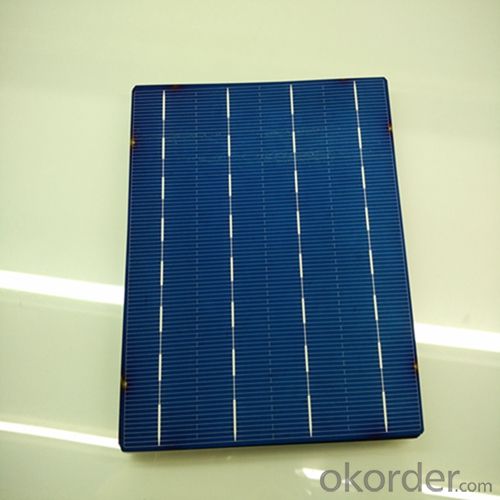
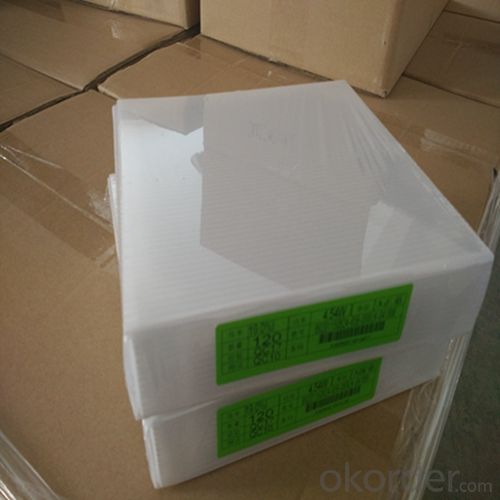
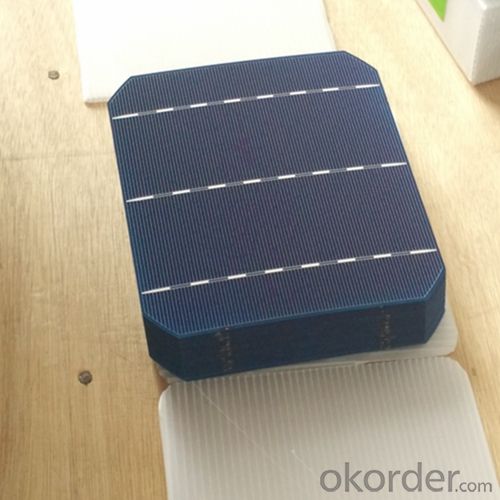
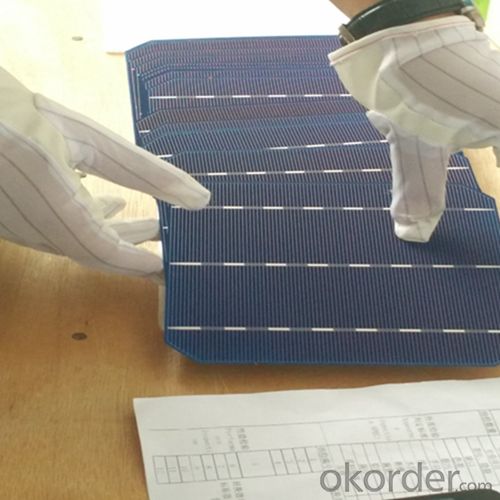
 FAQ
FAQ
Q: What price for each watt?
A: It depends on the quantity, delivery date and payment terms, generally Large Quantity and Low Price
Q: What is your size for each module? Can you tell me the Parameter of your module?
A: We have different series of panels in different output, both c-Si and a-Si. Please take the specification sheet for your reference.
Q: What is your size for each module? Can you tell me the Parameter of your module?
A: We have different series of panels in different output, both c-Si and a-Si. Please take the specification sheet for your reference.
A solar cell is an electronic device which directly converts sunlight into electricity. Light shining on the solar cell produces both a current and a voltage to generate electric power. This process requires firstly, a material in which the absorption of light raises an electron to a higher energy state, and secondly, the movement of this higher energy electron from the solar cell into an external circuit. The electron then dissipates its energy in the external circuit and returns to the solar cell. A variety of materials and processes can potentially satisfy the requirements for photovoltaic energy conversion, but in practice nearly all photovoltaic energy conversion uses semiconductor materials in the form of a p-n junction.
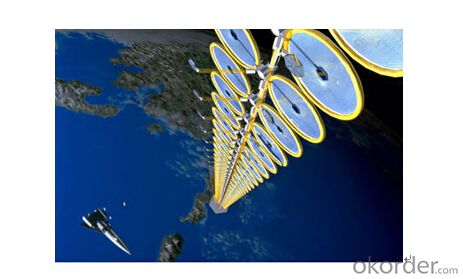
The basic steps in the operation of a solar cell are:
the generation of light-generated carriers;
the collection of the light-generated carries to generate a current;
the generation of a large voltage across the solar cell; and
the dissipation of power in the load and in parasitic resistances.
Solar cells are structured in layers with different functions. The working principle is the same as in semiconductors.

The main part of a silicon (Si) solar cell generating solar power is formed by two differently doped (n- and p-) silicon layers. A physical barrier is created between them along the p-/n- junction, with electrons and holes diffusing into regions of lower concentration.
This depleted region or space charge region can only be overcome with the help of photons i.e. sunlight.
To be able to channel electrones and holes and generate electric power, metal contacts need to be printed onto the front and rear side. Generally, a full aluminium or silver layer is screenprinted onto the rear. A thin grid forms the front contact keeping the impact on light entering the silicon cells as low as possible.
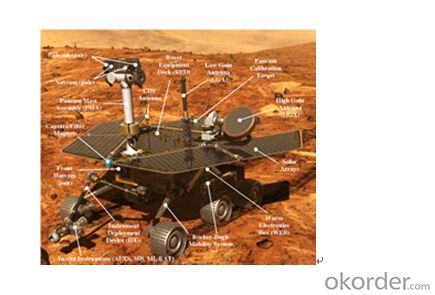
To reduce light reflection, a thin film of silicon nitride or titanium dioxide is coated onto the surface.
- Q: Can solar cells be used in developing countries?
- Yes, solar cells can be used in developing countries. They offer a sustainable and renewable source of energy that can be harnessed even in remote areas without access to electricity grids. Solar cells can provide clean and affordable electricity, helping to improve living conditions, foster economic growth, and reduce dependence on fossil fuels. Additionally, the decreasing costs and increasing efficiency of solar technology make it an increasingly viable option for developing countries.
- Q: Can solar cells be used on windows?
- Yes, solar cells can be used on windows. Transparent solar panels known as "solar windows" can be installed on windows to generate electricity while still allowing light to pass through. These solar windows are a promising technology for integrating renewable energy generation into buildings.
- Q: Can solar cells be used in space satellites?
- Yes, solar cells can be used in space satellites. In fact, they are the most common source of power for satellites in space. Solar cells convert sunlight directly into electricity, making them an ideal and efficient source of renewable energy in the space environment.
- Q: How can the huge solar cells be applied into the market?
- The huge solar cells are more used in the industrial project, which needs more power supply in one time. Without the huge solar cells, it might not be able to work at all.
- Q: Can solar cells be used in powering autonomous vehicles?
- Yes, solar cells can be used in powering autonomous vehicles. Solar energy can be harnessed using solar panels and converted into electrical energy to power the vehicle's battery or directly power its systems. This allows for a sustainable and renewable source of energy, reducing the reliance on fossil fuels and increasing the vehicle's range and efficiency. However, it's important to note that the amount of energy generated by solar cells may not be sufficient to fully power the vehicle, so it is often used in combination with other energy sources like batteries or fuel cells.
- Q: How much does a solar cell cost?
- It's not easy to answer the question in a simple way, but an example is the residential solar systems are typically sized from 3 to 8kW and end up costing between $15,000 and $40,000.
- Q: What is the efficiency of a typical solar cell?
- The efficiency of a typical solar cell varies, but it is generally around 15-20%.
- Q: How do solar cells perform in areas with high levels of snowfall?
- Solar cells typically do not perform optimally in areas with high levels of snowfall. The accumulation of snow on the surface of the cells can block sunlight and reduce their efficiency. However, advancements have been made to design solar panels with self-cleaning features or tilted angles that can help shed snow. Additionally, regular maintenance and clearing of snow can help ensure the continued performance of solar cells in such areas.
- Q: Is the Solar Power Photovoltaic Cells the same as PV cells modules?
- According to the application needs, solar cells after a certain combination, to achieve a certain rated output power and output voltage of a group of photovoltaic cells, called PV modules
- Q: Can solar cells be used for water heating?
- Yes, solar cells can be used for water heating. Solar thermal panels, also known as solar water heaters, use solar cells to convert sunlight into heat energy, which is then used to heat water for various applications such as domestic hot water or space heating.
Send your message to us
Fiber Based Poly 156x156mm2 Solar Cells - Class 2BB
- Loading Port:
- Shanghai
- Payment Terms:
- TT or LC
- Min Order Qty:
- 3999 watt
- Supply Capability:
- 6000000 watt/month
OKorder Service Pledge
OKorder Financial Service
Similar products
Hot products
Hot Searches
Related keywords
